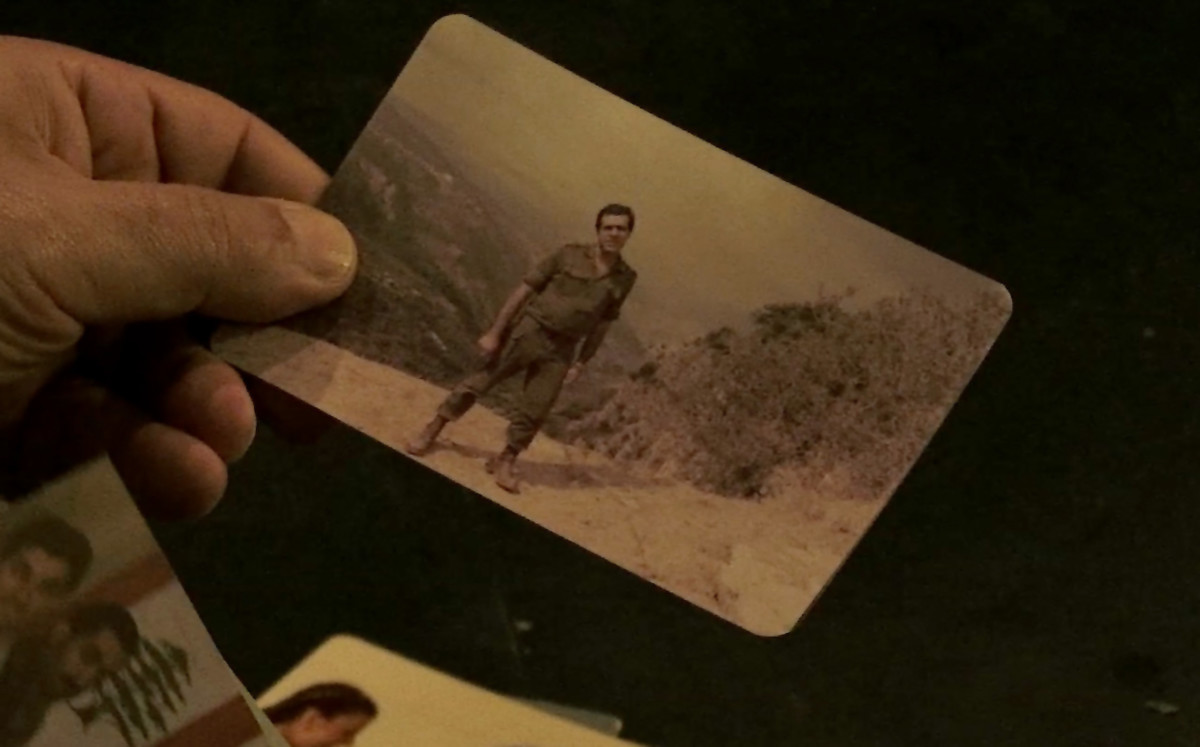DUBAI: “Everyone dirtied their hands. Everyone got involved. Everyone.” So says Ahed Bhar, a Palestinian born in Lebanon’s Shatila Refugee Camp in 1966 and a former fighter in the Popular Front for the Liberation of Palestine. He is talking about Lebanon’s disastrous civil war, which blighted the country from 1975-1990.
Bhar is one of three ex-soldiers from different factions who form the backbone of “About A War,” a compelling and often unsettling documentary co-directed by husband-and-wife duo Abi Weaver and Daniele Rugo, that sets out to examine the still-powerful impact that the war has on the country and its people.

As Rugo pointed out in his conversation with Arab News, no official account of Lebanon’s civil war has ever been laid out.
“When the war finished, they signed an agreement pardoning all crimes against civilians,” he said. “So the history of the war was really brushed under the carpet. As we delved more into trying to understand how people felt about the legacy of the war, we realized that there is quite a lot of unaddressed, unspoken trauma, and a general amnesia about the causes and the consequences. And what happened. There is no official account that is accepted by all parties in Lebanese society. There is no shared narrative. Most people will learn about the war depending on which sectarian group or political group they belong to. Or even their geographical group. They will each have their own version.
“What our film tries to do is to create a multi-perspective account, where we have three different fighters from three different groups, who lived through the war from different points of view, and the audience is asked to negotiate a position between these three,” he continued.

Those accounts, as you might expect, are often conflicting. But what comes across from all three is a sense that they were swept up in events that they didn’t really understand, but which they all believed placed them on the ‘right’ side.
“I thought everything I was doing was proper and may be ‘sanctified’ because I was doing it in the name of Christianity,” says Assad Chaftari, former head of intelligence for the Lebanese Forces in the war. Chaftari felt he had to combat what he saw as a growing Muslim influence — allied to the Palestinian cause — that threatened to create a ‘state within a state’ in Lebanon. He was 16 years old. “Now, of course, I see things very differently,” he says.
Rugo and Weaver’s film, which will screen in Lebanon this week — with shows in Beirut, Tripoli and Saida — marks one of the rare occasions when ex-fighters in the war have spoken publicly about their acts. And their documentary reveals that the scars it left are still raw.
Rugo suggested that one of the main reasons for that is precisely because the events and consequences of the war still aren’t really discussed openly.
“We discovered that there were quite a lot of people who really hadn’t addressed their trauma, and in particular the ex-fighters, because they had never spoken about what they’d done and most of them had never really started to come to terms with, or acknowledge, their roles in the combat,” he said.

Seeing that experience take place on screen — these aging men hearing themselves admit to some of the horrors they were a part of — can be hard to watch. It was, Rugo said, sometimes equally hard to film.
“Some of the interviews were very difficult,” he admitted. “We sat down with them for seven or eight hours on multiple occasions. So at the end of that, you’re drained anyway. And the material you’re recording is difficult. And you’re also going through a process where you empathize with a person and then you see him as someone who’s committed terrible deeds and been involved in a very bloody war. So you learn to (put aside) your own judgments and try and gain a deeper understanding of what motivated these people. That’s what we learned as filmmakers.
“On a more general level, we learned that unless we address the mistakes that have been made in the past, it’s very difficult to create a shared future. In particular in countries such as Lebanon, which are still marred by inequality, by sectarian divides, and whose geo-political situation is a precarious one,” he continued. “So this work on the past is really important to build a sustainable and more stable present and future.”


















